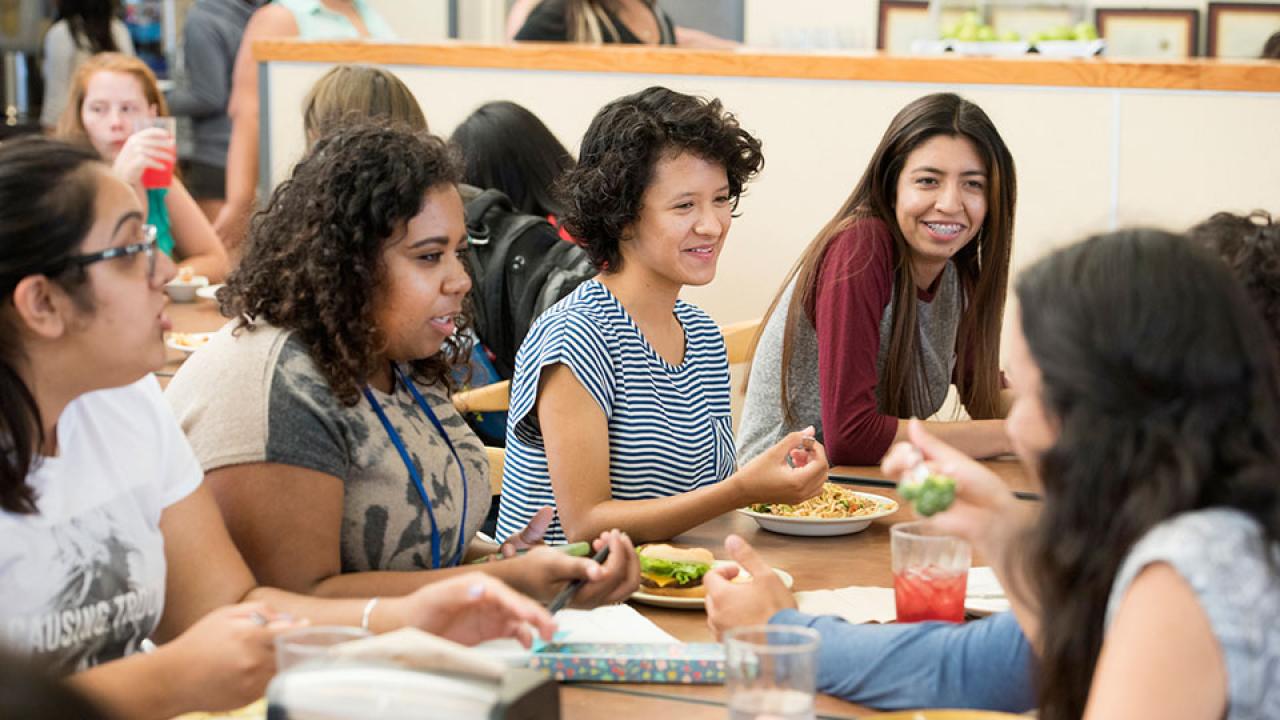Quick Summary
- UC Davis one of four UC campuses, nine California institutions now members
- Members to share lessons learned and data, contribute to publications
- Interim chancellor to convene group to report and make recommendations for campus
The University of California, Davis, is joining some of the nation’s most respected colleges and universities in an alliance to substantially increase the number of talented lower-income students who graduate nationally.
UC Davis is one of 38 new members joining 30 founding ones in the American Talent Initiative. Supported by Bloomberg Philanthropies, the initiative was launched in December 2016 to educate 50,000 additional high-achieving, lower-income students at the 270 colleges and universities with the highest graduation rates by 2025.
UC Davis was invited to join the group, which is limited to institutions with six-year graduation rates above 70 percent. Among the eight other member institutions in California are the UC campuses of Berkeley, Irvine and Los Angeles.
Goals align well with UC Davis commitment
“As one of the national leaders in enrolling and graduating promising students from all socioeconomic backgrounds, we have much to contribute to this shared work,” said Ralph J. Hexter, interim chancellor at UC Davis. “There is also much to gain in developing strategies for even more inclusiveness and more equitable outcomes for all student constituencies.”
About one in three of the undergraduates in UC Davis’ 2016 entering class are from low-income families, defined by the student’s eligibility for reduced-price lunch at high school. And 41 percent of undergraduates receive Pell Grants, a needs-based federal subsidy.
However, Hexter said, UC Davis has room for improvement in the goal of graduating an increasing number of lower-income students. “Even as our efforts to improve the graduation rate at Davis have begun to be successful,” he said, “the difference in the graduation rates of lower-income and higher-income students has stubbornly persisted.”
Working group to make recommendations
Hexter will convene a small group of faculty and administrators to report on how the university fosters access and success for lower-income students and recommend opportunities for enhancing those efforts.
UC Davis has programs to support the academic success of students, including those from historically underserved groups. The Educational Opportunity Program provides advising, seminars and workshops for low-income students and those who would be in the first generation of their family to graduate from a four-year university. Other UC Davis programs include the TRiO Scholars Program and the Special Transitional Enrichment Program.
Research shows that when high-achieving, lower-income students attend top-performing institutions, they graduate at higher rates, and the access provides them with a much greater chance of attaining leadership positions and opportunities throughout their lives. Yet in each graduating high school class, there are at least 12,500 lower-income young people with outstanding academic credentials who do not enroll at these institutions.
UC Davis and other initiative members will share lessons learned as well as institutional data. The Aspen Institute’s College Excellence Program and Ithaka S+R, the two not-for-profit organizations coordinating the initiative, will study the member practices that lead to measurable progress and share that knowledge through regular publications.
Media Resources
Julia Ann Easley, UC Davis News and Media Relations, 530-752-8248, jaeasley@ucdavis.edu
